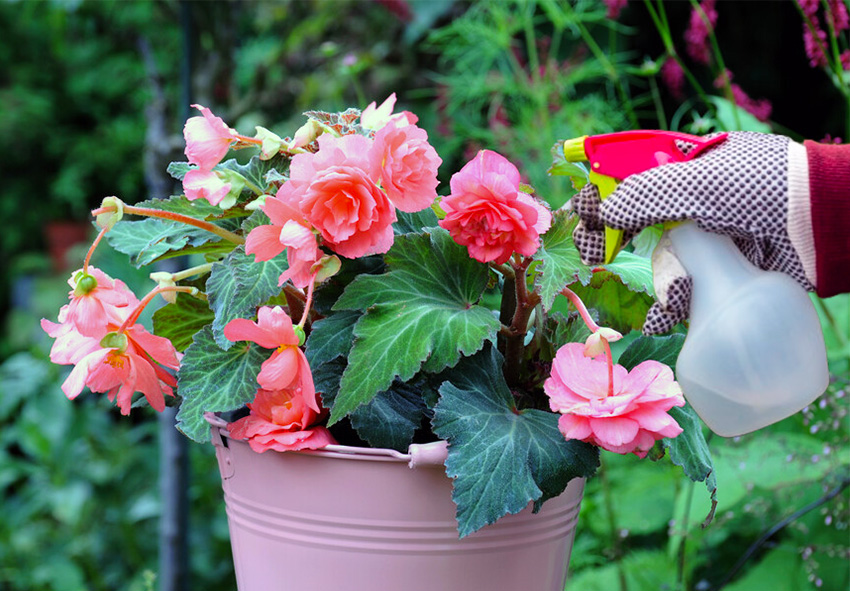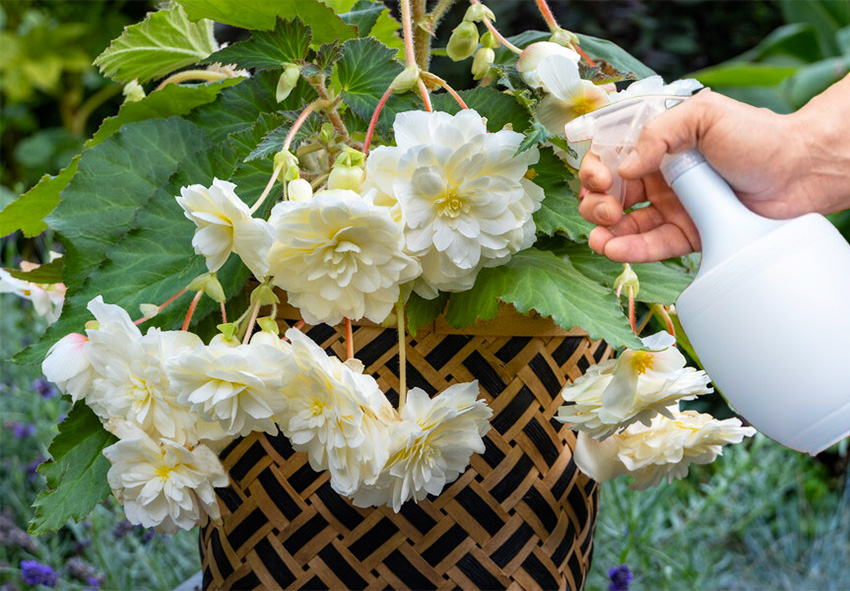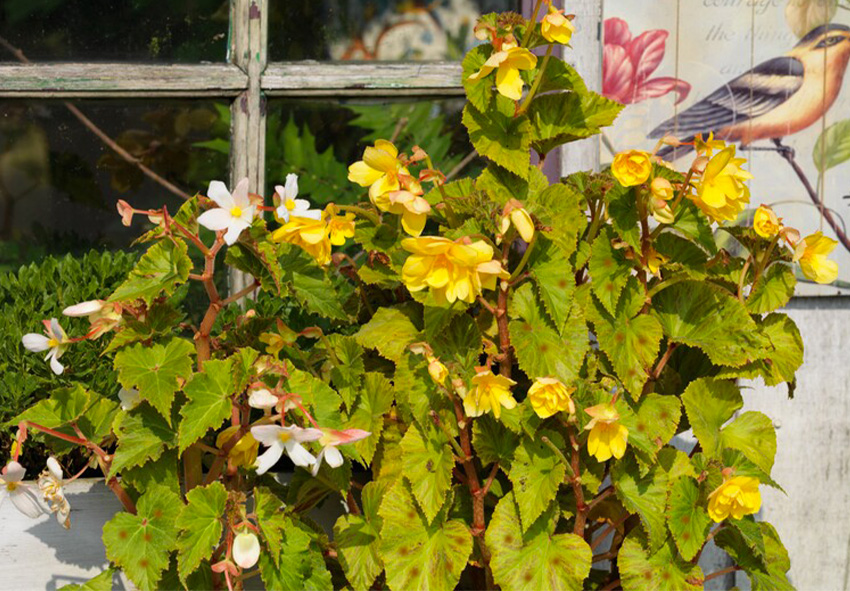Begonias are cherished for their vibrant blooms and decorative foliage, making them a favorite for gardens and indoor spaces. However, pests and diseases can threaten their beauty and health, leading to frustration for gardeners. Understanding how to manage these issues effectively is crucial to ensure your begonias thrive year-round. This guide offers practical tips for identifying, controlling, and preventing common problems in begonias. Our gardening blog is a perfect place to find all the information you need!
Common Pests Affecting Begonias

Pests are a common challenge when growing begonias, both indoors and outdoors. Left unchecked, these intruders can weaken plants, cause unsightly damage, and even lead to plant death. By recognizing the signs early, you can protect your begonias and keep them looking their best.
Identifying Common Begonia Pests
Recognizing common pests is the first step to protecting your begonias. By identifying these pests early, you can implement targeted control measures to safeguard your begonias. Here are the most frequent culprits to watch out for and how to identify them:
- Aphids
Tiny, pear-shaped insects that cluster on stems and the underside of leaves.
Often green, black, or brown, they secrete a sticky substance called honeydew.
They multiply quickly, making early detection critical.
- Spider Mites
Microscopic pests that create fine, web-like structures on leaves and stems.
Leaves may develop yellow or speckled spots as they feed.
Spider mites thrive in warm, dry conditions.
- Whiteflies
Small, moth-like insects that flutter when the plant is disturbed.
They often hide on the underside of leaves and feed on plant sap.
Whiteflies weaken plants by sapping their energy and reducing growth.
- Mealybugs
Soft-bodied insects that appear as white, cottony clusters on leaves and stems.
Can cause yellowing leaves and stunted growth.
Mealybugs are particularly fond of tender new growth.
- Thrips
Slender, winged insects that feed on flowers and foliage.
Damage includes silvery streaks, black spots, or distorted growth.
Thrips often hide in flower buds, affecting blooms before they open.
Methods to Control and Prevent Pests
For mild infestations, natural remedies like neem oil or insecticidal soap are effective. For more significant pest issues, chemical insecticides may be necessary. Regularly washing leaves and maintaining proper plant spacing can also deter pest infestations.
Diseases in Begonias

Diseases can wreak havoc on begonias, compromising their health and beauty. From fungal to bacterial and viral infections, understanding the root cause is essential for effective treatment. Maintaining a clean growing environment is the first step toward prevention.
Fungal Diseases
Fungal diseases like powdery mildew, botrytis, and root rot are common in begonias. Powdery mildew appears as white patches on leaves, while botrytis causes gray mold on flowers and stems. Root rot, often caused by overwatering, leads to mushy, blackened roots.
Bacterial Diseases
Bacterial infections such as leaf spot and soft rot can quickly damage begonias. Leaf spot presents as water-soaked lesions, while soft rot causes stems and roots to turn mushy and disintegrate. Prompt action is required to prevent these diseases from spreading.
Viral Diseases
Viral infections like begonia mosaic virus can distort leaves and cause yellowing patterns. While there is no cure for viral diseases, removing infected plants and maintaining cleanliness can minimize their spread.
Treating and Preventing Diseases
Proper care and early intervention are key to managing diseases in begonias. Below are common methods to treat and prevent fungal and bacterial issues:
- Ensure Proper Air Circulation: Good airflow reduces humidity, which helps prevent fungal diseases like powdery mildew and botrytis. Space plants adequately to avoid overcrowding.
- Avoid Overwatering: Overly wet soil promotes root rot and bacterial infections. Allow the top inch of soil to dry out before watering again.
- Use Sterile Tools and Pots: Clean gardening tools and pots to prevent spreading pathogens. Disinfect tools between uses, especially when dealing with infected plants.
- Apply Fungicides When Needed: Use fungicides specifically formulated for ornamental plants to control fungal issues. Follow label instructions carefully to ensure effectiveness.
- Remove Infected Plant Material: Prune away diseased leaves, stems, or flowers promptly to stop the spread. Dispose of infected material far from the garden or compost pile.
- Maintain Optimal Light and Temperature Conditions: Keep begonias in bright, indirect light and avoid exposing them to cold drafts. Stress-free plants are less likely to succumb to disease.
- Choose Disease-Resistant Varieties: Some begonia species are bred to resist common pathogens. Research and select resistant varieties for a healthier garden.
Preventative Measures for Healthy Begonias
Healthy begonias start with proactive care and proper growing conditions. Proper care during planting begonias is key to minimizing the risk of pests and diseases as well as the other preventative measures can significantly reduce the likelihood of pests and diseases, ensuring your plants stay vibrant and resilient.
Ensuring Proper Growing Conditions
Begonias thrive in well-draining soil, moderate humidity, and indirect light. Good air circulation prevents fungal growth, while consistent but not excessive watering helps maintain healthy roots. Avoiding waterlogged soil is crucial for disease prevention.
Regular Inspection and Maintenance
Inspect your begonias weekly for signs of pests or disease. Look at the leaves, stems, and soil surface for any abnormalities. Cleaning tools and avoiding overcrowding are simple but effective practices for maintaining healthy plants.
Organic Pest and Disease Deterrents
Organic solutions like companion planting, neem oil, and garlic sprays are excellent for deterring pests. Encouraging natural predators, such as ladybugs, can also help maintain a balanced garden ecosystem that supports healthy begonia growth.
How to Revive Begonias After Infestation or Infection

If your begonias suffer from pests or diseases, they can often be saved with timely intervention. Following the right steps ensures your plants recover and return to their full glory.
Steps to Recover Infested Begonias
Recovering infested begonias requires prompt action and consistent care. Follow these steps to restore your plants to health:
- Isolate the Affected Plant
Immediately move the infested begonia away from other plants to prevent pests or diseases from spreading. Keep it in a separate, well-lit area for monitoring.
- Inspect and Identify the Problem
Examine the plant thoroughly to identify the pest or disease causing the issue. Use a magnifying glass for small pests like spider mites or aphids.
- Prune Damaged Leaves and Stems
Cut away visibly damaged or infested foliage using sterilized scissors. Dispose of the pruned material to avoid recontamination.
- Clean the Plant
Wash the leaves gently with lukewarm water to remove pests and residue. For stubborn infestations, use a mild soap solution or insecticidal soap.
- Treat with Appropriate Solutions
Apply pest-specific treatments such as neem oil, horticultural oil, or systemic insecticides. For diseases, use fungicides or antibacterial sprays as recommended.
- Repot if Necessary
If the infestation or disease originates from the soil, repot the plant with fresh, sterile potting mix. Clean the roots and discard the contaminated soil.
- Reintroduce Gradually
Once the plant shows signs of recovery, slowly reintroduce it to its original environment. Ensure it is fully healed to prevent future infestations.
Rehabilitating Diseased Begonias
For begonias with fungal or bacterial infections, trim away affected areas and treat the plant with a fungicide or bactericide. Improve environmental conditions, such as light, air circulation, and drainage, to aid recovery. Patience is key, as it may take weeks for begonias to regain their health.
Conclusion
Pests and diseases are challenges that can be effectively managed with knowledge and care. By understanding common issues, implementing preventative measures, and taking prompt action, you can keep your begonias healthy and flourishing. Explore our online store for pest control solutions and premium-quality begonias to elevate your gardening experience.
Frequently Asked Questions (FAQs) about Begonias Pest and Disease Control
1. What are the most common pests that affect begonias?
Begonias are frequently targeted by pests such as spider mites, aphids, mealybugs, and thrips. These pests can cause visible damage like discolored leaves, holes, or a sticky residue. Early identification and treatment with insecticidal soap or neem oil can help protect your begonias.
2. How can I prevent fungal diseases in begonias?
To prevent fungal diseases, ensure proper airflow around your begonias, avoid overwatering, and use well-draining soil. Water the base of the plant rather than the foliage to minimize the risk of powdery mildew or botrytis. Using fungicides as a preventative measure is also effective.
3. Can overwatering cause issues for begonias?
Yes, overwatering can lead to root rot and other fungal diseases. Begonias thrive in well-draining soil that remains slightly moist but not soggy. Allow the top inch of soil to dry out before watering again to maintain healthy roots.
4. What should I do if my begonia is infested with pests?
If your begonia is infested, isolate the plant to prevent the pests from spreading. Remove affected leaves, clean the plant, and apply pest treatments such as neem oil, insecticidal soap, or horticultural oil. Regular monitoring and adjustments to care practices will help your begonia recover.
5. Can I order begonia corms or tubers from your online store?
Yes, you can order Begonia tubers from our online store Dutch-bulbs.com. We typically offer a variety of Begonia tubers for purchase during the fall. Ordering in the fall allows you to receive your tubers in time for spring planting, ensuring they have the best chance of thriving in your garden.
Published: 13.01.2025
